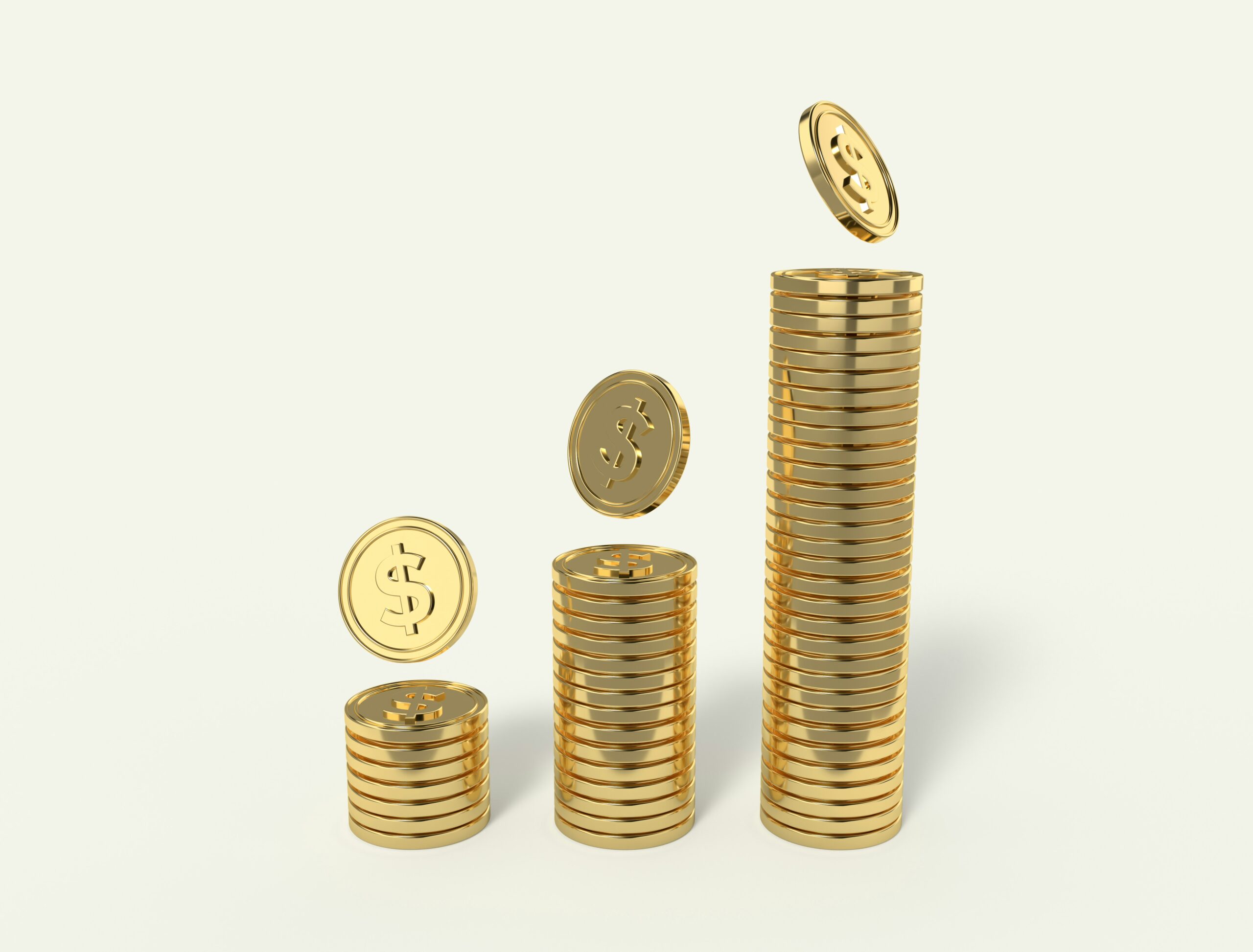If you’ve ever heard the phrase “compound interest is the eighth wonder of the world,” there’s a good reason why. Compound interest is one of the most powerful tools for building wealth over time, yet many people don’t fully understand how it works. Unlike simple interest, which only pays you on the money you originally deposit, compound interest allows your balance to grow at an accelerating pace because it earns interest on both your principal and your accumulated interest. In other words, your money starts making money for you. In this article, we’ll break down what compound interest is, how it works, and why it’s so important for anyone who wants to grow their savings or investments.
New to investing? Check out How to Start Investing.
What Is Compound Interest?
Compound interest is the process of earning “interest on interest.” With simple interest, you only earn returns on the original amount you deposited or borrowed. With compound interest, the interest you earn gets reinvested, and that combined total begins generating even more interest. This snowball effect leads to exponential growth the longer your money is invested.
For example: If you invest $1,000 at 5% annual interest, after one year you’ll have $1,050. In year two, instead of earning 5% only on the original $1,000, you earn it on $1,050, giving you $1,102.50. Over time, this growth accelerates, turning small investments into large sums if left untouched.
Try the Compound Interest Calculator.
How Compound Interest Works
The magic of compound interest comes from time and reinvestment. The formula is:
A = P (1 + r/n) ^ (n × t)
Where:
- A = final amount
- P = initial principal
- r = interest rate (decimal form)
- n = number of times interest is compounded per year
- t = number of years
Don’t let the math scare you, this just means the more often interest is added (monthly, quarterly, daily), the faster your money grows.
Example:
- $1,000 invested at 5% interest compounded annually for 20 years = $2,653
- The same $1,000 at 5% compounded monthly for 20 years = $2,712
The frequency of compounding and the time horizon make a big difference.
Factors That Affect Compound Interest
The growth of compound interest depends on four main factors: the amount of money you start with (principal), the interest rate, how often your interest compounds, and, most importantly, time. The bigger your starting balance and the higher your interest rate, the faster your money grows. Frequent compounding (monthly or daily) also accelerates results. But nothing beats time: the longer your money stays invested, the more powerful compounding becomes.
- Principal Amount: The more money you start with, the larger your growth.
- Interest Rate: Higher rates increase your returns.
- Compounding Frequency: Daily or monthly compounding grows faster than yearly.
- Time: The most important factor, starting early allows more years for compounding to work its magic.
The Power of Time and Compounding
Time is what truly makes compound interest so powerful. Even small investments grow into large sums when left to compound over decades. Starting early, even with modest amounts, beats starting later with bigger contributions. The earlier your money goes to work, the more years it has to multiply, which is why financial experts say “time in the market beats timing the market.”
Example:
- Investor A starts saving $200/month at age 20 and stops at age 30.
- Investor B starts saving $200/month at age 30 and continues until age 65.
By retirement, Investor A, who only saved for 10 years, often has more money than Investor B, simply because their money had more time to compound.
Real-Life Examples of Compound Interest
Compound interest shows up in everyday life, both positively and negatively. On the positive side, your savings account, retirement plan, and reinvested stock dividends all grow through compounding. On the negative side, credit card debt and high-interest loans use the same principle against you, causing balances to balloon if left unpaid. Understanding both sides helps you take advantage of compounding for growth while avoiding its debt traps.
- Savings Accounts: Bank accounts pay small interest, which compounds over time.
- Retirement Accounts (401k, IRA): Investments reinvest earnings, creating exponential growth.
- Stocks and ETFs: Reinvesting dividends compounds wealth.
- Debt (Credit Cards, Loans): On the flip side, compounding can work against you, credit card balances balloon when interest compounds daily.
Benefits of Compound Interest
- Builds wealth passively over time.
- Rewards consistency, even small amounts invested regularly grow large.
- Encourages long-term thinking.
- Works best when automated (auto-deposits, dividend reinvestment).
Risks and Misunderstandings
While powerful, compound interest is often misunderstood:
- Overestimating Returns: People assume growth will always be steady, but markets fluctuate.
- Forgetting Inflation and Taxes: These eat into returns if not accounted for.
- Debt Trap: High-interest debt compounds against you, growing faster than you can pay it off if unmanaged.
How to Take Advantage of Compound Interest
To make compound interest work for you:
- Start investing or saving as early as possible.
- Contribute consistently, even small amounts.
- Reinvest dividends and interest instead of cashing out.
- Pay off high-interest debt quickly to avoid negative compounding.
- Use tax-advantaged accounts (401k, Roth IRA) to maximize growth.
Summary
Compound interest is one of the most powerful financial tools available. It allows your money to grow exponentially by earning interest not just on your initial deposit, but also on the interest that builds up over time. The key factors, starting early, staying consistent, and reinvesting your returns, can turn small contributions into significant wealth. At the same time, compounding can work against you with high-interest debt. The bottom line: learn to harness compound interest in your savings and investments, and avoid it in your debts, to build a stronger financial future.
Learn more about the different Types of Investments.
FAQs
How is compound interest different from simple interest?
Simple interest is calculated only on your original deposit, while compound interest adds interest to both your original balance and the interest you’ve already earned, creating exponential growth.
Can compound interest make me rich?
It can, but only with time and consistency. Small, regular contributions invested over decades can grow into large sums. However, it’s not a get-rich-quick strategy.
How often does interest need to compound for the best results?
The more frequently, the better, daily compounding grows faster than monthly or annual. Still, the biggest factor is time in the market, not just compounding frequency.
Is compound interest always good?
Not always. While it grows your savings and investments, it also makes debt (like credit cards) more expensive if balances aren’t paid off. It works for or against you depending on the situation.
Do I need a large amount of money to benefit from compound interest?
No. Even small amounts invested consistently can grow significantly over time. Starting early is more important than starting big.
How does inflation affect compound interest?
Inflation reduces the purchasing power of your returns. That’s why many people invest in assets like stocks, ETFs, or real estate, which historically outpace inflation better than low-yield savings accounts.
What’s the easiest way to take advantage of compound interest?
Automate contributions to a savings or investment account, reinvest dividends, and leave your money invested for the long term. Consistency and patience are key.

